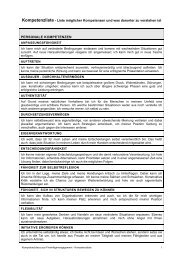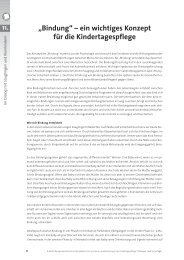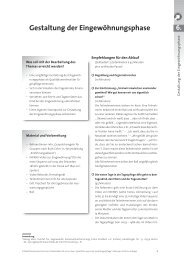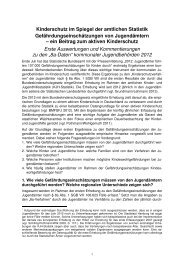download - Deutsches Jugendinstitut e.V.
download - Deutsches Jugendinstitut e.V.
download - Deutsches Jugendinstitut e.V.
You also want an ePaper? Increase the reach of your titles
YUMPU automatically turns print PDFs into web optimized ePapers that Google loves.
Uniform EU standards for social work in urban areas?<br />
If one considers the present social and regional political developments in the new EU<br />
member states, it can on the one hand be established that great differences exist,<br />
particularly on a socio-political level, which have developed from different historical roots<br />
and therefore also on different paradigms. In Germany for example, a “dual” system of<br />
welfare originated for the poor shared by church and state (General Prussian Land Act of<br />
1794), initially as a separate system (welfare/control/responsibility) and later as a<br />
corresponding system (“Elberfelder System”) in which local authorities and the federal<br />
states were responsible. In Great Britain/USA, the German system was adopted, but minus<br />
the voluntary character; the Poor Law (1834) replaced the alms system from the time of<br />
Elizabeth I; the “worthy poor” were the responsibility of private welfare, whereas the<br />
“unworthy poor” were taken care of by state welfare. The local authorities are subordinate<br />
to central government and church and private associations are independent from one<br />
another. In Sweden, the transformation from a feudalistic agricultural to an industrial society<br />
took place during a relatively late period in comparison to other European countries and<br />
became cemented in a type of double structure containing both welfare principles from<br />
agricultural rural families and the paradigms of state social welfare. Here there is no<br />
separation of state and society/church, as the welfare associations are merged into the<br />
state. In the Netherlands, the priority of the population over the state resulted out of the<br />
“struggles for freedom” and a notably social orientation of church organisations,<br />
particularly in provisions for elder citizens.<br />
On the basis of these developments, a wide range of socio-political operational systems<br />
and a variety of administrative operational levels currently exist. This produces on the one<br />
hand a highly variable handling of social phenomena.<br />
On the other hand, comparable social-political phenomena also exist. There are for<br />
example common economic and social-structural developments, comparable child and<br />
youth socialising trends and also similar modernisation phenomena.<br />
These social-structural common denominators coupled with socio-political differences<br />
suggest on the one hand differentiated strategies. These should however be oriented<br />
towards common criteria which in turn could assume a benchmarking character for a<br />
European political strategy within this field.<br />
The following criteria appear to me to be relevant across the board for all countries,<br />
although the design of content and methods could also possess a country-specific<br />
character:<br />
• Participation principle: both ethical aspects and the necessity for sustainability<br />
require the existence of this principle<br />
• Socio-environmental orientation: this targets the relevant geographical,<br />
material, cultural and social foundations in each country and places them at the<br />
core of further action.<br />
• Efficiency and/or ecological orientation: this criterion represents a<br />
compatible treatment of resources and a comprehensive ascertainment of the<br />
area targeted.<br />
• Relativity principle: the prerogative of interpretation and the weighting of<br />
problems are assigned to the countries and/or regions<br />
97

















